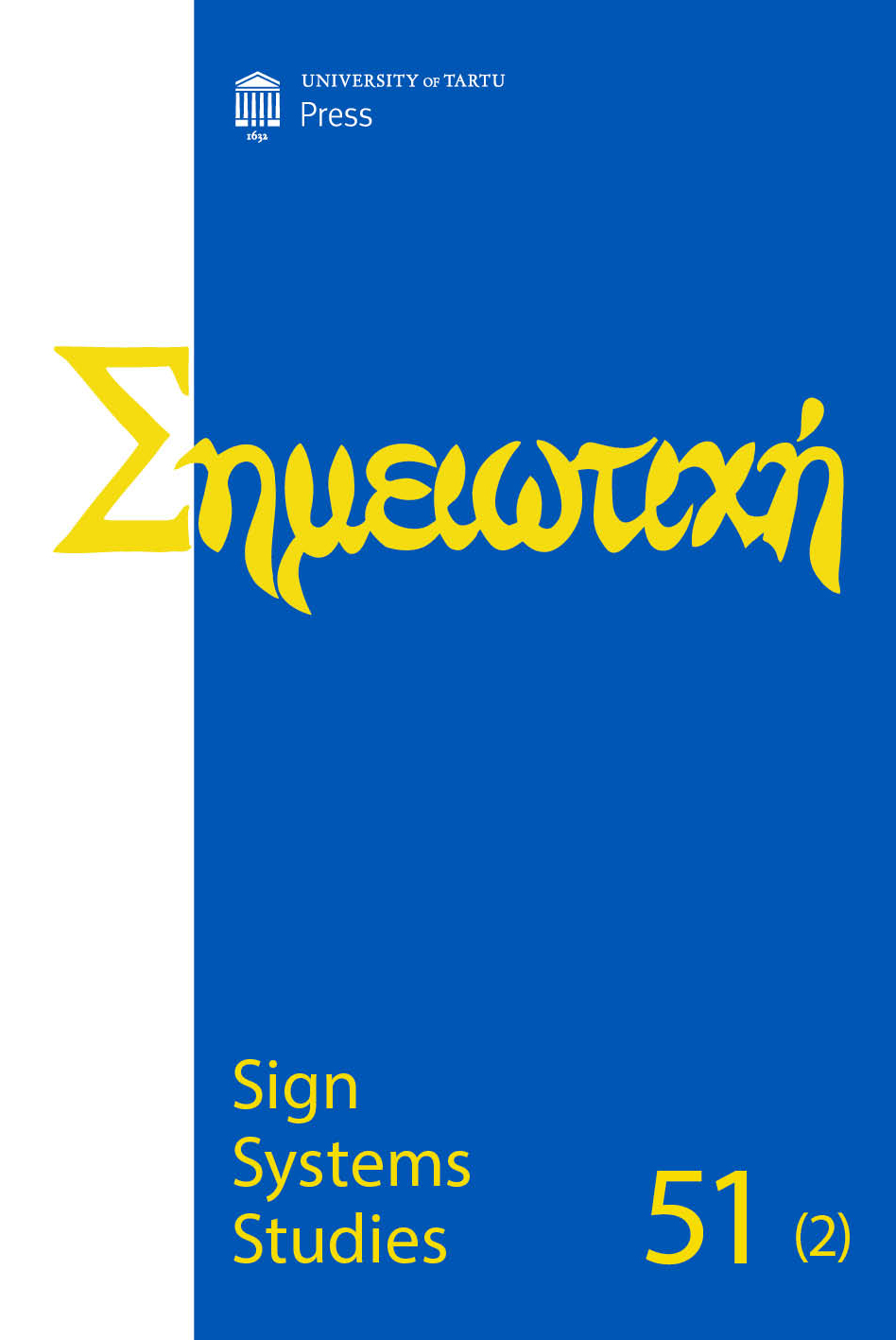“Have you not heard, my soul [...]?”: The Great Kanon of St Andrew of Crete as a multimodal autocommunicative text
DOI:
https://doi.org/10.12697/SSS.2023.51.2.05Abstract
This paper examines the Great Kanon (also Great Canon; in the original Greek, Ὁ Μέγας Κανών) of St Andrew of Crete (ca. 660–740) as a case study in how religious ritual texts deploy autocommunicative processes. To study this complex liturgical hymn that occupies a key role in the ritual practice of Eastern Orthodox and Byzantine Catholic Christians we employ a theoretical framework rooted primarily in Juri Lotman’s theory of autocommunication, as complemented by more recent developments in social and cognitive semiotics, particularly ideas of multimodality and viewpoint. We find that the Great Kanon performs a variety of autocommunicative functions, primarily through its provision of a rhetorical metalanguage for the interpretation of the Old and New Testaments. This is a metalanguage which is multimodally enacted in ritual performance. The process makes the believer’s experience of reading the Bible an open and unfolding dialogue, in which the viewpoints of biblical characters become models for (re)interpreting one’s life experiences and reshaping one’s sense of self. The paper ultimately highlights that analyses of ritual texts, which deploy methods from cultural and cognitive semiotics, can deepen our understanding of autocommunication.
Downloads
Downloads
Published
How to Cite
Issue
Section
License
Copyright (c) 2023 Jason Van Boom, Alin Olteanu

This work is licensed under a Creative Commons Attribution-NonCommercial-NoDerivatives 4.0 International License.


